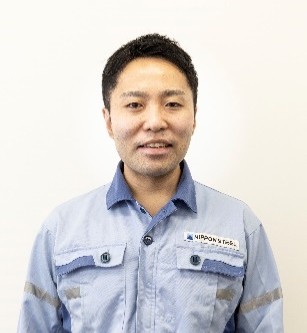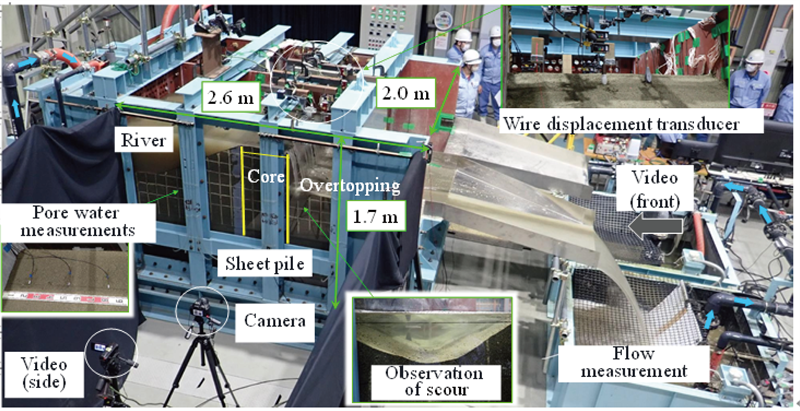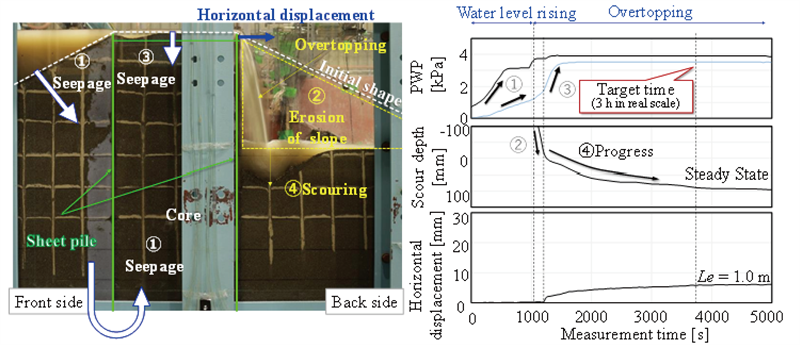Newsletter Volume 10, Issue 1 March 2025
Young Members Column
Challenge to Clarify the Effectiveness of Levees Reinforced with Steel Sheet Piles against Overtopping and Scouring
Challenge to Clarify the Effectiveness of Levees Reinforced with Steel Sheet Piles against Overtopping and Scouring
Yusuke Mochida
Senior researcher, Steel Structure Research Lab.
NIPPON STEEL CORPORATION
Senior researcher, Steel Structure Research Lab.
NIPPON STEEL CORPORATION
 I work on the applications of steel sheet piles in the Steel Structure Research Department of the Nippon Steel Corporation. I have recently been working on the application of double steel sheet pile walls (SPWs) as countermeasure structures against the overtopping of river levees in Japan. I am honored to have received an Early Career Award for my research results. Press-in technology is essential to the implementation of my research results. I received valuable advice on my research from experts during the presentation of my results at the Third International Conference on Press-in Engineering (IPCE) in July 2024.
I work on the applications of steel sheet piles in the Steel Structure Research Department of the Nippon Steel Corporation. I have recently been working on the application of double steel sheet pile walls (SPWs) as countermeasure structures against the overtopping of river levees in Japan. I am honored to have received an Early Career Award for my research results. Press-in technology is essential to the implementation of my research results. I received valuable advice on my research from experts during the presentation of my results at the Third International Conference on Press-in Engineering (IPCE) in July 2024. |
| Fig. 1. Overview of the installed experimental equipment |
 |
| Fig. 2. Results of the unreinforced condition |
 |
| Fig. 3. Deformation state at target time and changes in measured values (Le = 1.0m) |
In Japan, a structure with an SPW inside a levee is not practically applied as a countermeasure against overtopping, and the number of research cases in this area is limited. Therefore, experimental equipment that could simulate disasters caused by overtopping was designed and installed to understand the behavior of SPWs during overtopping (Fig. 1).
The deformation process was clarified by analyzing the time-series changes in several parameters obtained from the experiments using this equipment. Under unreinforced conditions, the levee broke after about 120 seconds (Fig. 2). On the other hand, under the reinforced condition with SPWs, the levee height was maintained even when the water overtopped it. Furthermore, I gained knowledge about the behavior of SPWs during overtopping. Before overtopping, seepage occurs in the rising water level, flowing from the bottom of the sheet pile to the core (①). Subsequently, overtopping erodes the slope (②). PWP converges after water seeps into the core from the top edge (③). Scouring progresses gradually and converges (④).
Displacement occurred gradually from immediately after water overtopping until scouring steady (④). (Fig. 3). In the future, we would like to establish an analytical model based on the experimental results.
In this study, we referred to previous studies on press-in technology, including studies on steel sheet piles. I appreciate the platform provided by the International Press-in Association, which has enabled engineers and researchers to share their experiences and discoveries. This invaluable opportunity will foster the development of innovative technologies to improve society.
| << Previous | Newsletter Top | Next >> |








